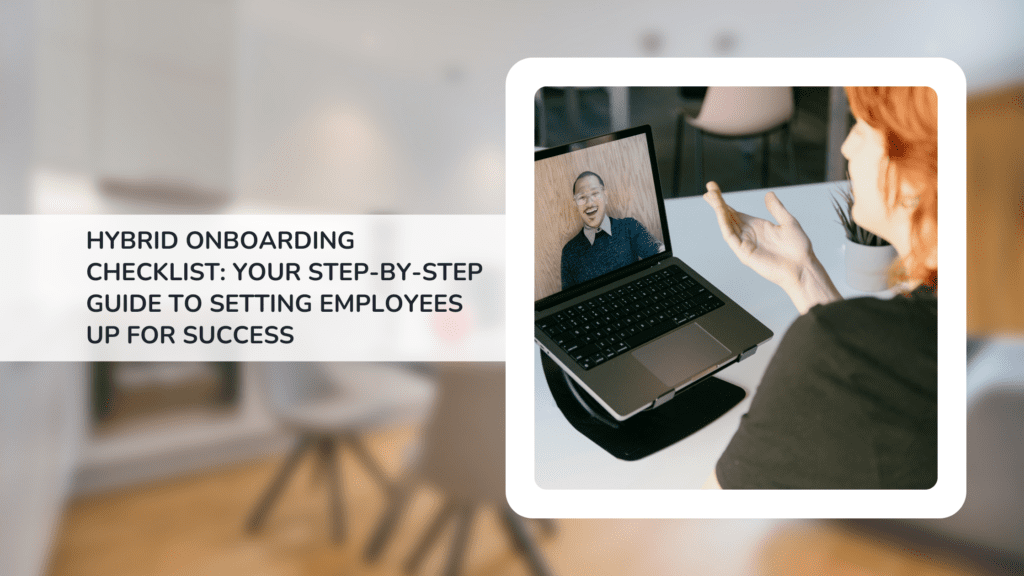
HERA, a new study by NASA, highlights the importance of building aligned teams. Keep reading to learn a few methods you can apply to your own corporate team to assess and improve their compatibility.
A new NASA study called the Human Exploration Research Analog (HERA) is examining the behavior of astronauts on mock space missions in order to better understand the value of their interpersonal relationships.
The relationships between crew members can be vital to a space mission’s success or failure. Unlike a typical work environment, employees can’t go home and take a break after a stressful day or a clash with a colleague. They need to function and perform highly together under extreme conditions, like months or even years of isolation and confinement in a spacecraft.
So far, the study has found that certain behavioral and personality traits, like a good sense of humor, do better in space. On the other hand, individuals who are overly detail-oriented can be challenging. Ultimately, the study drives home the importance of building a team that is aligned when it comes to personality and core values – which is applicable to any type of organization this side of the universe.
While your corporate team likely isn’t in space together for months or years at a time, there are several methods you can use to test personality compatibility and core value alignment on both current and potential employees.
Here are three:
1. When Hiring, Look for a Candidate Aligned With Your Core Values
Core values are the connecting thread to everything a company does. In fact, a study by Reward Gateway found that 89% of employers say that employees who understand their business’ mission are critical to its success. However, only 32% of those surveyed employees feel completely informed about the values of their organization – problematic, indeed.
NASA has four core values:
- Safety
- Integrity
- Teamwork
- Excellence
The HERA study itself beautifully exemplifies how NASA abides by their core values: by doing their part to research the effects of long-term space exploration on mental health and what factors come into play for both the astronaut and the crew to have positive interpersonal relationships and a high-performing team dynamic hit all their core value nails on the head.
For those of us working down here on earth, one of the best ways to ensure your employees are aligned is to hire a team that abides by the same core values. Then, your team is riding the same wavelength for everything from the way they approach challenges to the types of things they prioritize at work.
One way that Outback recruits like-minded candidates is by using Topgrading. Topgrading is a corporate hiring tactic in which candidates undergo a detailed 12-step process that includes extensive interviews, research into job history, and more. The interview questions in this methodology are not just about professional skills: they are about the person’s character and fit into your company. After the interview process, candidates are then classified as either “A, B, or C Players.” For clarity: an A Player is best of the best. The B Player, a notch below the A, may lack the potential to be a high performer. And, finally, a C Player is typically classified as an underperformer.
Topgrading can help create a team that is on the same page when it comes to the critical things that matter to your company, like core values and culture.
Here are five Topgrading steps you can easily integrate into your hiring process:
Recruit from Your Networks
You’ve most likely worked with a few “A Players” before, so dive into your professional network pool and take advantage of your connections to find great potential candidates.
Conduct a Telephone Screening Interview
Conducting interviews over the phone can help narrow down your scope of potential candidates. Weed out the ones who don’t meet your criteria and invite the strong candidates to move onto the next step.
Get Specific with the Competency Interview
This next interview directly examines the candidate’s qualifications. Each question asked should be geared toward a specific requirement of the job.
Finally, Go Deep with the Topgrading Interview
Here, the interviewer asks more in-depth questions about the candidate’s education, previous jobs, and goals in order to get to know the recruit better. It also rounds up all the information found out about the candidate in the previous steps to ensure its validity.
Have the Candidate Arrange Their Own Reference Checks
In Topgrading, the candidate is responsible for setting up their own reference checks. This helps to prove to employers who the high performers are, since a top candidate typically doesn’t leave jobs on bad terms.
Check out our guide, The HR Guide to Recruitment, for more hiring tactics and tips that can help build an aligned team.
2. Help Employees Work Better Together Through Employee Engagement Activities, Programs, and Solutions
When your employees are engaged, they work better. In fact, a study from Gallup found that engaged employees produce more profitable results for their workplace. Plus, research from Globoforce highlights the fact that having good relationships with your colleagues is also vital to quality of life here on earth – just as HERA emphasizes the great importance of having positive relationships with fellow crew members in outer space.
Some ways that you can help your team get more connected and build better relationships with each other is to participate in engagement-focused programs. At Outback, we offer a wide variety of team building activities and professional development programs:
- Team Building Activities – Available anywhere in North America, our 30+ team building activities help your corporate group collaborate, get to know each other better, and work on specific skillsets while having fun and increasing engagement. We offer everything from charitable-themed activities that give back to your community and interactive scavenger hunts that lead you around your location to custom events that suit your team’s unique needs.
- Training and Professional Development Programs – From classroom-based sessions to experiential hands-on workshops, these programs can help your team further develop a wide range of technical skills. Some of the programs include Positive Team Dynamics, which can help you create a framework for what a successful team looks and improve how your employees work together, and Conflict Resolution, which teaches you how to better manage and resolve conflicts with your colleagues in a more productive and positive way.
- Coaching and Consulting Solutions – Tackle your business challenges head-on from the top of your organization and help your group develop the mindset of a high-performing team with these impactful solutions.
3. Analyze Personality and Team Compatibility with D.I.S.C. Assessments
NASA’s HERA study emphasizes the importance of having crew members that possess certain personality traits that do well in extreme, high pressure situations. They tested this by studying individuals – aged 25 to 55, who have a science degree and are good candidates to be future astronauts – on 45-day long mock missions.
Another way to make sure that your team is aligned, especially in terms of behavior? Have them take a personality test.
D.I.S.C. is a great behavioral self-assessment tool that can identify an individual’s strengths and weaknesses, particularly in a team dynamic. This test, based on research done by Dr. William Moulton Marston, can help highlight personality traits as it relates to D.I.S.C.’s four quadrants:
- Dominance
- Influence
- Steadiness
- Conscientiousness
In order to determine where an individual falls within the four D.I.S.C. profiles, they take a quiz in which they answer a series of questions as honestly as possible their behaviors and tendencies. Three examples of questions on the assessment are:
- What motivates you the most when working on a task?
- How would you describe your communication style?
- Can you describe how you deal with confrontation?
The test results place the employee somewhere within the quadrants to determine which trait most accurately represents them. As a result, D.I.S.C. assessments can help you see how aligned and compatible your team is, and, in turn, improve their interpersonal relationships.
So, what are some ways that you can implement D.I.S.C. into your team? Whether you’re curious to see where your current team lands or you would like to slowly introduce the method into your hiring process, here are a couple of ways you can use D.I.S.C.:
- Request current employees to take the D.I.S.C. test. Then, compare and analyze everyone’s results to see how compatible your team really is.
- Ask potential candidates to take the assessment quiz. Or, you can simply integrate a few D.I.S.C-inspired questions into your interview process.
At Outback, we use D.I.S.C. to understand different personality types and how to best to interact and work with them. Once you’ve received the results of the D.I.S.C. assessment, you can learn how to better work with certain personalities by having your leadership team take specific training programs.
Need Further Advice on Team Building, Training, and Coaching?
For more support on how to get your team aligned, just get in touch with one of our Employee Engagement Consultants to find a solution that fits the unique needs of your corporate group.



